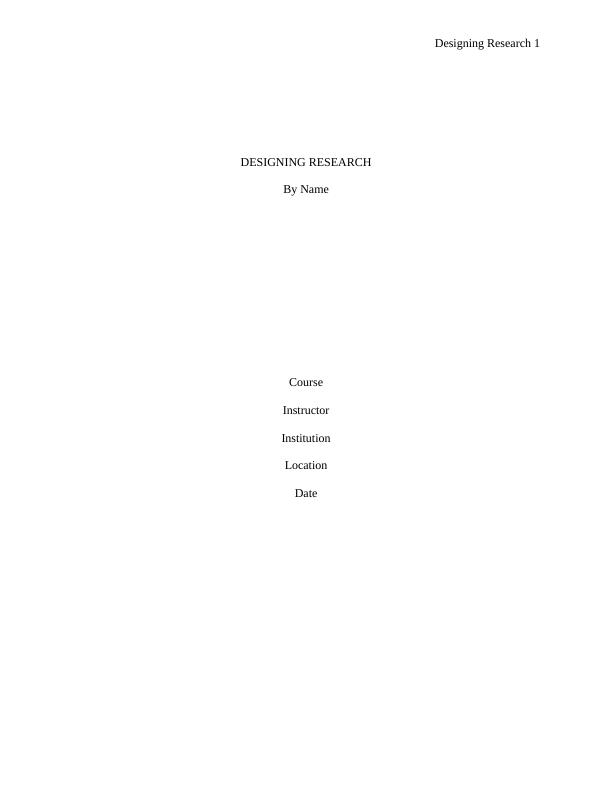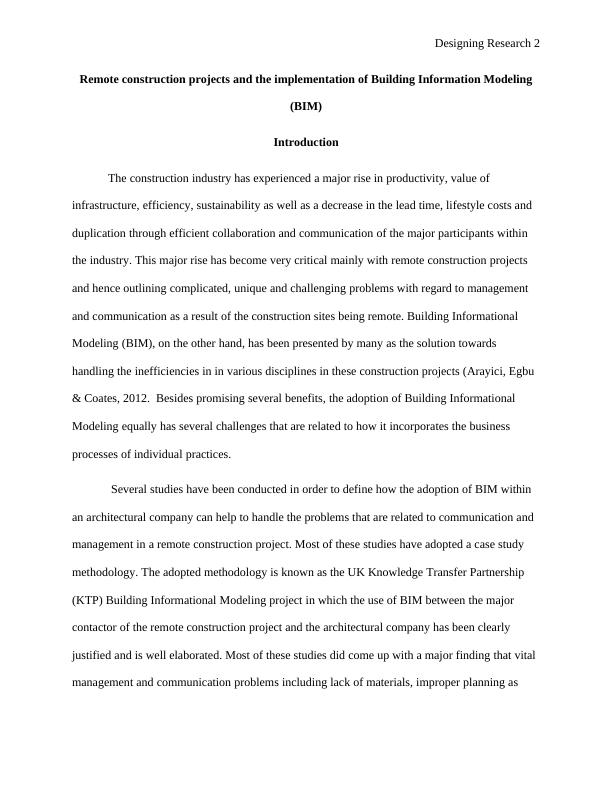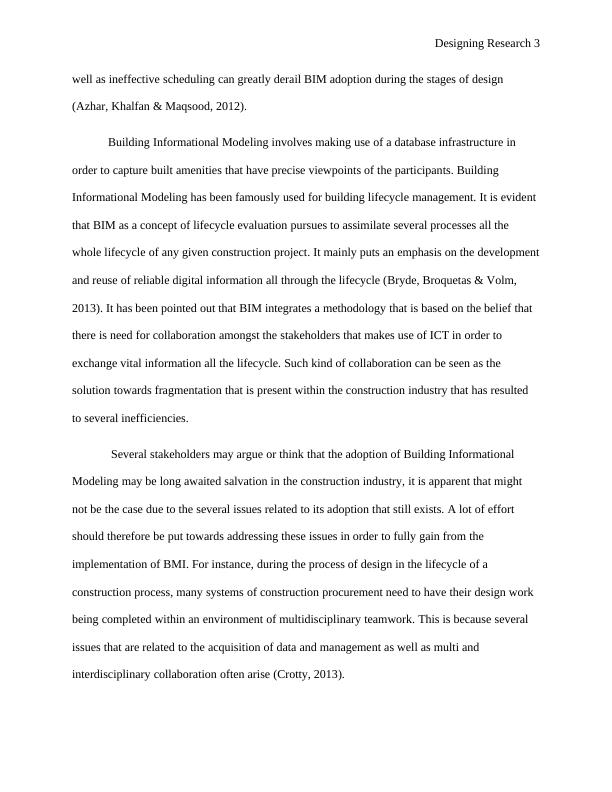Implementation and Adoption of Building Information Modeling (BIM) in Remote Construction Projects
Develop an understanding of the current state of knowledge in a specific area of research by conducting a literature review and writing a short critical essay discussing the ideas and debates arising from 10 or more publications with reference to 3 or more design precedents.
9 Pages2137 Words1 Views
Added on 2022-12-19
About This Document
This article discusses the implementation and adoption of Building Information Modeling (BIM) in remote construction projects, highlighting the challenges and benefits. It explores how BIM can improve communication and management in remote construction projects.
Implementation and Adoption of Building Information Modeling (BIM) in Remote Construction Projects
Develop an understanding of the current state of knowledge in a specific area of research by conducting a literature review and writing a short critical essay discussing the ideas and debates arising from 10 or more publications with reference to 3 or more design precedents.
Added on 2022-12-19
ShareRelated Documents
End of preview
Want to access all the pages? Upload your documents or become a member.
BIM Impact on the Cost Overruns in Infrastructure Projects in Australia
|38
|12742
|452
Benefits of Using BIM in Construction Projects
|17
|7340
|121
Building information modelling (BIM)
|7
|1682
|20
Impact of Building Information Modeling (BIM) on People Management Processes in Construction SMEs
|11
|3491
|70
Adoption of BIM Within the UK Construction Report 2022
|9
|4309
|31
Benefits and challenges of Building Information Modeling
|57
|18243
|1



